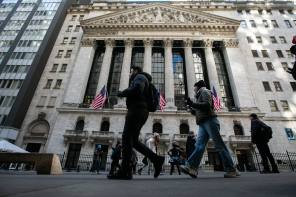COVID-19 is significantly different from both the recent SARS and MERS epidemics, as shown in Figure 1.
| SARS | MERS | COVID-19 |
Origin | Southern China | Middle East | East-Central China |
Infections Rate (R0) | 2 to 4 | Not passed human-to-human | 1.4 to 3.8 |
Total Cases | ~8,200 | ~2,500 | ~85,500 |
Total Fatalities | ~805 (~10%) | ~850 (~35%) | ~2,900 (~3.5%) |
Length of outbreak | 9 months | 8+ years | 3 months so far |
Incubation time | 2 – 7 days | 2 – 14 days | 2 – 14 days |
Table 1: Source: WHO, US Centers for Disease Control, Johns Hopkins University
For comparison with seasonal flu, which has a fatality rate of only 0.1 per cent in the United States, making COVID-19 is about 30 times more deadly.
This new virus is especially dangerous for the elderly and for people with pre-existing health conditions who appear to have a mortality rate of about 15 per cent as compared to the overall 3.5 per cent mortality rate.
Does history have any other lessons for dealing with COVID-19?
Better analogies for estimating financial impact than previous pandemics are scenarios that include a significant element of global crises and fear, like the 2015 Chinese equity crash, the September 11, 2001 terrorist attacks and the global financial crisis.
Rather than just looking at how markets performed overall, we examined the extent to which different equity factors performed during the three global crises.
Equity factors are the fundamental drivers of stock returns.
Investment strategies often incorporate one or more of the factors as a means for deciding which stocks to invest in.
For example, the “size” factor measures the average market capitalisation of a portfolio because it is well known that small companies outperform larger companies over long time horizons.
However, small companies’ returns tend to be more volatile than larger companies’ returns.
Volatility is also a fundamental factor because it is well known that low-volatility stocks outperform high-volatility stocks.
We found that during the Chinese 2015 equity crisis, three aspects immediately stood out about how global markets responded to Chinese woes five years ago:
- Low-volatility stocks outperformed global markets, (which lost 12 per cent in the period) by a full 8 per cent. Low-volatility stocks provided the strongest returns (smallest losses) as investor sought downturn protection.
- Another defensive factor, Dividend Yield, outperformed the losing markets by about 4 per cent.
- Small cap stocks, which are normally high-volatility, lost more than the broader markets.
Figure 1: Performance of global equity markets (dashed line) and the factors described in the text during the Chinese equity crisis. Low-volatility stocks (red), High-yield stocks (blue) both outperformed while small-cap stocks (yellow) underperformed during the time China flowed its equities markets with liquidity enhancing cash infusions in 2015
Source: Style Analytics.
It is worth noting that during this period, while low-volatility and high-dividend paying stocks outperformed the broader market, all strategies/factors lost money in global portfolios.
This historical period indicates that portfolios invested in such defensive stocks (low-volatility and dividend-paying) lost less money than other portfolios.












